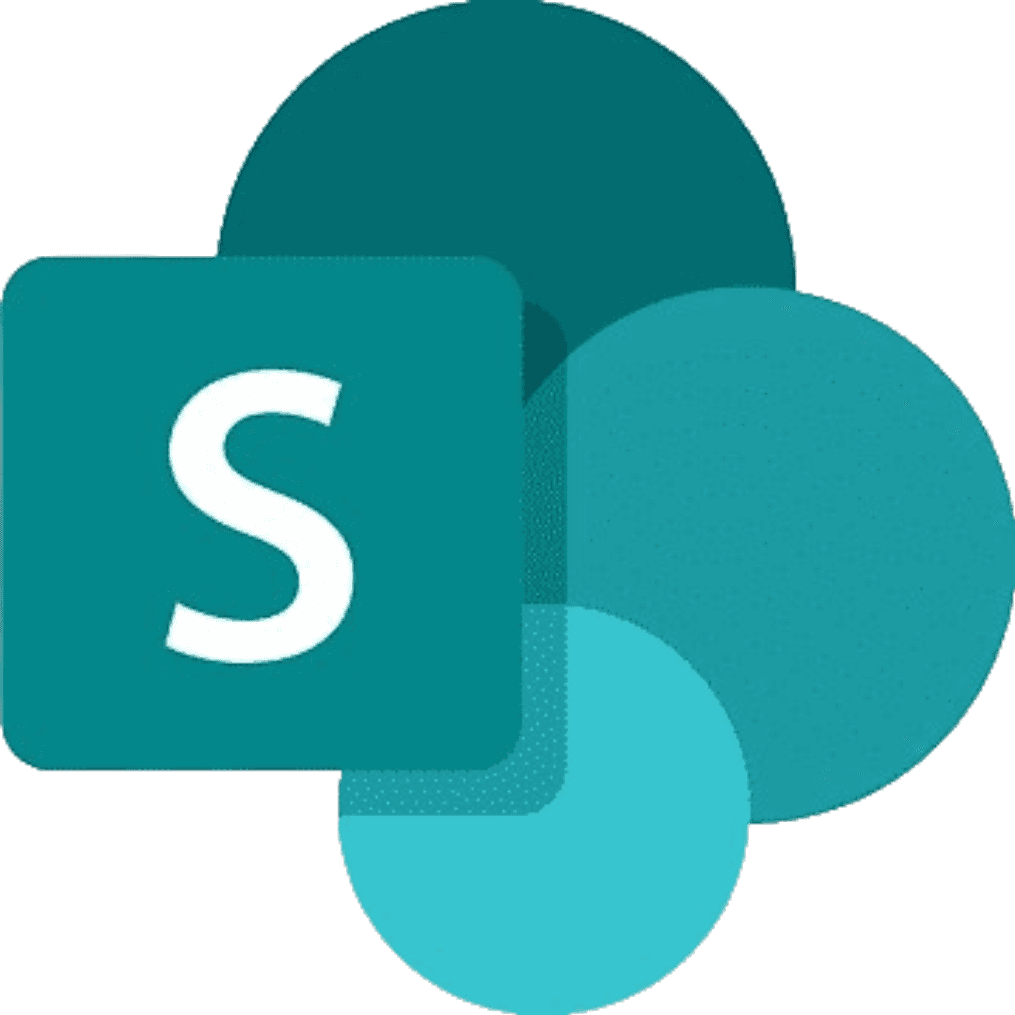The Enterprise AI Roadmap: Key Trends Heading Into 2025
The Enterprise AI Roadmap: Key Trends Heading Into 2025
The Enterprise AI Roadmap: Key Trends Heading Into 2025
The Enterprise AI Roadmap: Key Trends Heading Into 2025
The Enterprise AI Roadmap: Key Trends Heading Into 2025
The Enterprise AI Roadmap: Key Trends Heading Into 2025
The Enterprise AI Roadmap: Key Trends Heading Into 2025
By Apratim Ghosh
By Apratim Ghosh
By Apratim Ghosh
Feb 12, 2025
Feb 12, 2025
Feb 12, 2025
Agentic AI
Agentic AI
Generative AI
Generative AI
Enterprise AI
Enterprise AI
White paper
White paper
AI Based Gross to Net (G2N) Solution
AI Based Gross to Net (G2N) Solution
Valuable Asset For Agri Science Company
Valuable Asset For Agri Science Company





A September 2024 research report found that, although over 90% of organizations had increased their generative AI use over the previous year, only 8% considered their initiatives mature. However, the 2025 AI landscape looks extremely promising, especially as hype gives way to more pragmatic approaches.
As excitement clouds, enterprises increasingly seek proven results from generative AI rather than early-stage prototypes. Read on to uncover the top AI trends 2025, like agentic AI, Artificial General Intelligence (AGI), and larger context windows, and get tips on building a robust and well-planned enterprise AI roadmap.
2025 Enterprise AI Trends
In the coming year(s), AI use cases will move beyond chatbots, with enterprises looking to adopt the technology more creatively. Many will build software atop large language models, while others will look at solutions that help overcome the inherent drawbacks of current AI models and frameworks.
That being said, here are six enterprise trends that will rule the 2025 AI landscape:
Agentic RAG: As Agentic AI use cases expand, agentic RAG will take over traditional retrieval augmented generation (RAG) in 2025. Incorporating AI agents into the RAG pipeline will help orchestrate its components and perform additional actions beyond simple information retrieval and generation. By merging RAG’s knowledge capabilities with agentic AI’s decision-making skills, agentic RAG will overcome common RAG challenges such as hallucinations, lack of explainability, and the inability to act autonomously on retrieved information.
Cache-augmented Generation: Like agentic RAG, 2025 will witness cache-augmented generation (CAG) as a key AI trend, combining external knowledge with large language models (LLMs) to enhance model performance. CAG will preload all relevant knowledge into a model’s context and utilize precomputed inference states to address the critical limitations of RAG. Instead of dynamically retrieving documents during inference, CAG integrates all relevant information into LLMs’ extended context beforehand, enabling streamlined, retrieval-free knowledge tasks.
Small Language Models: In 2025, large language models (LLMs) will be replaced by small language models (SLMs). Smaller in scale and scope, SLMs will use less memory and computational power, making them ideal for resource-constrained environments such as edge devices and mobile apps. Offering several domain or usage specific capabilities, SLMs will help address unique requirements. SLMs will also benefit scenarios where AI inferencing needs to be done offline while enabling organizations to explore new AI use cases without investing in multiple GPUs or specialized talent.
Multimodal AI: As generative AI tools feed on various types and formats of data, the concept of multimodal AI will become hugely popular in 2025. Offering the ability to process and integrate information from multiple modalities, multimodal AI will combine and analyze different forms of data inputs to enable higher accuracy and robustness in tasks such as image identification, language translation, and speech recognition.
Artificial General Intelligence: While artificial general intelligence, or AGI, has been explored since the beginning, foundation models will slowly move to AGI in 2025. AGI systems matching or exceeding human cognitive abilities will become mainstream. They will think before they act, perform actions in the real world, and possess persistent memory and capacity for hierarchical planning.
Larger context windows: With context continuing to be the Achilles heel of most AI models, in 2025, larger context windows will become increasingly popular. Empowering LLMs to process more information in a single prompt, these windows will help uncover new use cases, such as debugging a large codebase or extracting insight from product reviews.
AI Implementation Tips for Success
Organizations must embrace best practices to improve Generative AI implementation success as they look to incorporate these trends to stay relevant and competitive. Here are a few considerations to keep in mind:
Shift from POC to actual implementation: Adopting new trends might seem overwhelming, but in 2025, organizations must shift from POC to actual implementation. In addition to adopting out-of-the-box tools, they must also consider customizing these solutions to meet unique, industry—and business-specific needs.
Invest in AI governance platforms: With AI-related security and compliance concerns surging, investing in AI governance platforms will be critical to keep up with a changing regulatory landscape. These platforms will help organizations manage and control AI systems and ensure they are used ethically and responsibly. Companies must also strengthen their access control and encryption mechanisms to prevent data breaches and misuse and maintain their compliance posture.
Tackle disinformation: As new AI trends emerge; it becomes increasingly important to tackle growing disinformation. Creating or implementing systems that ensure accurate and authentic information can help prevent impersonation, phishing, fake news, and the spread of harmful content.
Educate and train users (Change Management): Organizations must improve AI literacy across the business as AI adoption grows. From executives to developers and everyday employees, AI education and training are necessary to ensure people know how to use these tools, assess their outputs, and navigate common limitations. Establishing robust change management frameworks is also key to maximize benefits, reduce risks, and ensure smooth AI adoption.
Measure and monitor ROI: While building an enterprise AI roadmap, organizations must also consider continuous monitoring of usage and ROI. Establishing key metrics that measure the success of AI adoption can help better understand challenges and opportunities while carving appropriate mitigation strategies for best results.
Align AI with Your Digital Ambitions
Generative AI innovations are unstoppable. With new developments happening daily, it is essential to understand how these trends align with your organization’s digital ambitions. The more prepared you are to integrate these trends into your strategic planning successfully, the higher the chances of driving long-term success!
A September 2024 research report found that, although over 90% of organizations had increased their generative AI use over the previous year, only 8% considered their initiatives mature. However, the 2025 AI landscape looks extremely promising, especially as hype gives way to more pragmatic approaches.
As excitement clouds, enterprises increasingly seek proven results from generative AI rather than early-stage prototypes. Read on to uncover the top AI trends 2025, like agentic AI, Artificial General Intelligence (AGI), and larger context windows, and get tips on building a robust and well-planned enterprise AI roadmap.
2025 Enterprise AI Trends
In the coming year(s), AI use cases will move beyond chatbots, with enterprises looking to adopt the technology more creatively. Many will build software atop large language models, while others will look at solutions that help overcome the inherent drawbacks of current AI models and frameworks.
That being said, here are six enterprise trends that will rule the 2025 AI landscape:
Agentic RAG: As Agentic AI use cases expand, agentic RAG will take over traditional retrieval augmented generation (RAG) in 2025. Incorporating AI agents into the RAG pipeline will help orchestrate its components and perform additional actions beyond simple information retrieval and generation. By merging RAG’s knowledge capabilities with agentic AI’s decision-making skills, agentic RAG will overcome common RAG challenges such as hallucinations, lack of explainability, and the inability to act autonomously on retrieved information.
Cache-augmented Generation: Like agentic RAG, 2025 will witness cache-augmented generation (CAG) as a key AI trend, combining external knowledge with large language models (LLMs) to enhance model performance. CAG will preload all relevant knowledge into a model’s context and utilize precomputed inference states to address the critical limitations of RAG. Instead of dynamically retrieving documents during inference, CAG integrates all relevant information into LLMs’ extended context beforehand, enabling streamlined, retrieval-free knowledge tasks.
Small Language Models: In 2025, large language models (LLMs) will be replaced by small language models (SLMs). Smaller in scale and scope, SLMs will use less memory and computational power, making them ideal for resource-constrained environments such as edge devices and mobile apps. Offering several domain or usage specific capabilities, SLMs will help address unique requirements. SLMs will also benefit scenarios where AI inferencing needs to be done offline while enabling organizations to explore new AI use cases without investing in multiple GPUs or specialized talent.
Multimodal AI: As generative AI tools feed on various types and formats of data, the concept of multimodal AI will become hugely popular in 2025. Offering the ability to process and integrate information from multiple modalities, multimodal AI will combine and analyze different forms of data inputs to enable higher accuracy and robustness in tasks such as image identification, language translation, and speech recognition.
Artificial General Intelligence: While artificial general intelligence, or AGI, has been explored since the beginning, foundation models will slowly move to AGI in 2025. AGI systems matching or exceeding human cognitive abilities will become mainstream. They will think before they act, perform actions in the real world, and possess persistent memory and capacity for hierarchical planning.
Larger context windows: With context continuing to be the Achilles heel of most AI models, in 2025, larger context windows will become increasingly popular. Empowering LLMs to process more information in a single prompt, these windows will help uncover new use cases, such as debugging a large codebase or extracting insight from product reviews.
AI Implementation Tips for Success
Organizations must embrace best practices to improve Generative AI implementation success as they look to incorporate these trends to stay relevant and competitive. Here are a few considerations to keep in mind:
Shift from POC to actual implementation: Adopting new trends might seem overwhelming, but in 2025, organizations must shift from POC to actual implementation. In addition to adopting out-of-the-box tools, they must also consider customizing these solutions to meet unique, industry—and business-specific needs.
Invest in AI governance platforms: With AI-related security and compliance concerns surging, investing in AI governance platforms will be critical to keep up with a changing regulatory landscape. These platforms will help organizations manage and control AI systems and ensure they are used ethically and responsibly. Companies must also strengthen their access control and encryption mechanisms to prevent data breaches and misuse and maintain their compliance posture.
Tackle disinformation: As new AI trends emerge; it becomes increasingly important to tackle growing disinformation. Creating or implementing systems that ensure accurate and authentic information can help prevent impersonation, phishing, fake news, and the spread of harmful content.
Educate and train users (Change Management): Organizations must improve AI literacy across the business as AI adoption grows. From executives to developers and everyday employees, AI education and training are necessary to ensure people know how to use these tools, assess their outputs, and navigate common limitations. Establishing robust change management frameworks is also key to maximize benefits, reduce risks, and ensure smooth AI adoption.
Measure and monitor ROI: While building an enterprise AI roadmap, organizations must also consider continuous monitoring of usage and ROI. Establishing key metrics that measure the success of AI adoption can help better understand challenges and opportunities while carving appropriate mitigation strategies for best results.
Align AI with Your Digital Ambitions
Generative AI innovations are unstoppable. With new developments happening daily, it is essential to understand how these trends align with your organization’s digital ambitions. The more prepared you are to integrate these trends into your strategic planning successfully, the higher the chances of driving long-term success!
Get in Touch
Get in Touch
Related Blogs
Related Blogs
Related Blogs
Related Blogs





Join our Newsletter 👇,
Join our Newsletter 👇,
Join our Newsletter 👇,
Join our Newsletter 👇,
Want the latest technology updates & business trends in your inbox? Subscribe to our newsletter and experience reading really interesting and informative.
Want the latest technology updates & business trends in your inbox? Subscribe to our newsletter and experience reading really interesting and informative.
Your email address
Sign me up
Explore more topics
Ready to brush up on something new? We've got more to read right this way.
Explore more topics
Ready to brush up on something new? We've got more to read right this way.
Explore more topics
Ready to brush up on something new? We've got more to read right this way.
Explore more topics
Ready to brush up on something new? We've got more to read right this way.
Explore more topics
Ready to brush up on something new? We've got more to read right this way.
TECH
Inspire
Ideate
Inovate
Reach Out to Us :
Copyright © 2025 InovarTech. All rights reserved
TECH
Inspire
Ideate
Inovate
Reach Out to Us :
Copyright © 2025 InovarTech. All rights reserved
TECH
Inspire
Ideate
Inovate
Reach Out to Us :
Copyright © 2025 InovarTech. All rights reserved
TECH
Inspire
Ideate
Inovate
Reach Out to Us :
Copyright © 2025 InovarTech. All rights reserved
TECH
Inspire
Ideate
Inovate
Reach Out to Us :
Copyright © 2025 InovarTech. All rights reserved







